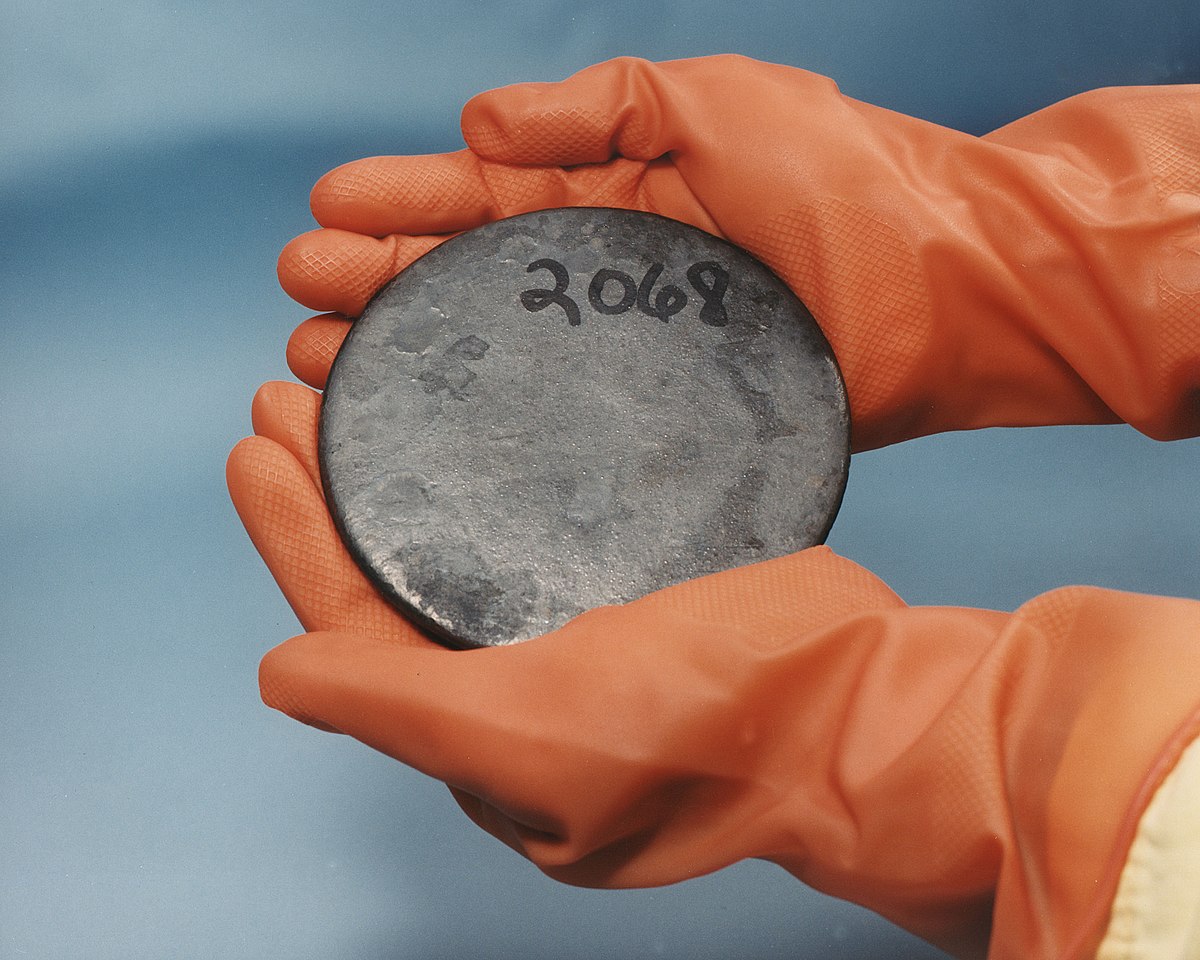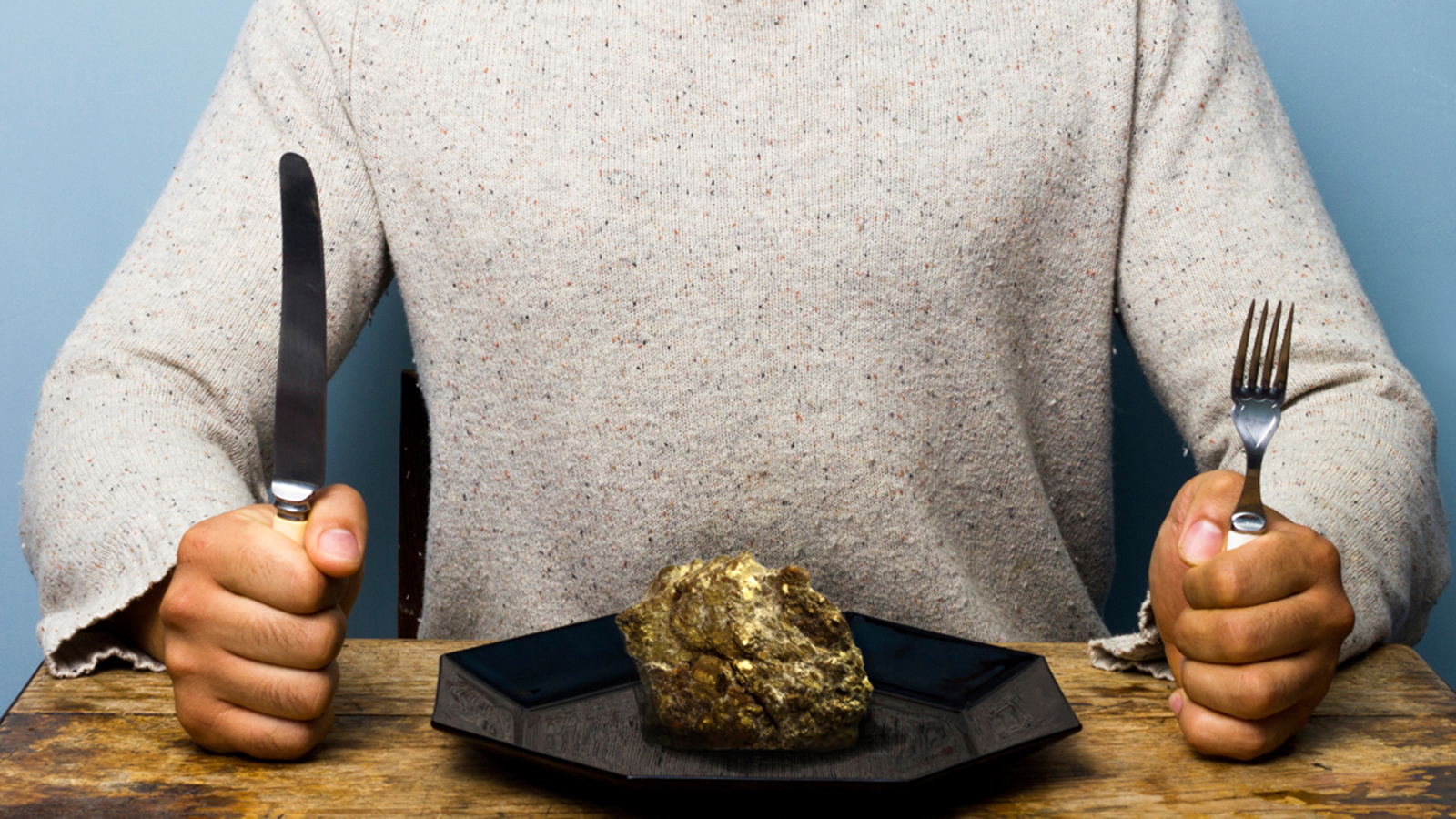Uranium is a radioactive metal that is found in small amounts in the environment. It is also used in some medical and industrial applications. One gram of uranium contains about 7,000 calories.
This means that if you ate one gram of uranium, you would be consuming the equivalent of seven thousand calories from food. However, uranium is not considered to be a food source and should not be consumed for its calorie content.
Uranium is a radioactive metal that is used in nuclear power plants and weapons. It is also used in some medical treatments. One gram of uranium has approximately 25,000,000 calories.
This means that if you were to eat one gram of uranium, you would be consuming the equivalent of about 100 days worth of food! Of course, this is not something that you should do, as uranium is highly toxic. Even small amounts can cause serious health problems.
If you come into contact with uranium, it is important to seek medical attention immediately.

Credit: en.wikipedia.org
How Many Calories Does Have Uranium?
Uranium is a radioactive metal that is used as fuel for nuclear reactors and weapons. It is also a by-product of the enrichment of uranium ore. One pound of uranium contains about 0.28 million calories.
How Many Calories Does a Gram of Uranium 235 Have?
Uranium 235 has a calorific value of 8,400 calories per gram. This means that if you were to eat one gram of uranium 235, it would release 8,400 calories of energy. However, this would also be fatal as uranium 235 is highly radioactive.
How Many Calories are in 1Kg of Uranium 235?
Uranium-235 is a naturally-occurring isotope of uranium, comprising just over 0.7% of all uranium found in nature. With a half-life of 700 million years, it is not radioactive enough to be used for fuel in nuclear power plants, but is still useful for other purposes such as powering spacecraft and for research into nuclear weapons.
Nowadays, the global average price of natural uranium is about $28 per pound, or around $60 per kilogram.
So one kilogram of uranium-235 would cost around $60.
Atomic weights are usually given in relation to the most common isotope of an element – carbon-12. This means that one atom of carbon-12 has a mass of 12 atomic units (or daltons).
Uranium atoms have a mass of 238 daltons each, so one mole (6.02 x 10^23 atoms) of uranium atoms has a mass of around 14 kilograms. Therefore, 1 gram (1000th of a kilogram) contains around 7 x 10^21 atoms – that’s more than seven quintillion!
To calculate the number of calories in 1kg of uranium 235, we need to know its specific heat capacity and its molar enthalpy change when it undergoes combustion reaction with oxygen gas to form dioxide gas.
The specific heat capacity value needed will depend on what temperature range the calorie calculation covers – for example water has a higher specific heat capacity at lower temperatures than it does at higher temperatures. The molar enthalpy change value can be found in various online databases such as the NIST Chemistry WebBook.
How Much Energy is in a Gram of Uranium?
A gram of uranium contains about 0.7 x 10^-3 Joules of energy, which is about 0.2% of the energy in a gram of natural uranium.
Just eat 18 billion calories of Uranium
How Many Calories in 1 Gram of Plutonium
If you’re curious about how many calories are in 1 gram of plutonium, we have the answer. Although it’s not a food item, we can estimate the calorie content of this radioactive metal.
Plutonium is a very dense metal, with a density of 19.1 grams per cubic centimeter.
This means that 1 gram of plutonium would be able to fit into a cube that is just under 0.05 centimeters on each side.
In terms of energy, 1 gram of plutonium contains around 22 Million electron volts (MeV). This amount of energy is equal to around 1310 kilocalories (kcal).
So, if we were to burn 1 gram of plutonium, it would release over 1000 times the amount of energy than what’s contained in 1 food calorie!
How Many Calories are in Uranium-235
Uranium-235 is a radioactive isotope of uranium. Its half-life is 700 million years. It is one of the few nuclides with a fission cross section large enough to make it useful for nuclear weapons and in certain types of reactors.
When enriched, uranium-235 makes up about 0.7 percent (by weight) of most enriched uranium used in commercial pressurized water reactors.
In natural uranium, only 0.71 percent of its atoms are uranium-235. The rest are mostly uranium-238, with a small amount of other elements such as thorium and potassium.
All told, there are about 2.5 grams of uranium-235 in every kilogram (1,000 grams) of natural uranium ore.
How Many Calories are in Uranium
Uranium is a heavy metal that is found in small amounts in the Earth’s crust. It is used in some nuclear reactors and has been used in atomic bombs.
Uranium has an atomic number of 92 and a mass of 238.0289 amu.
It has 26 protons and 92 – 26 = 66 neutrons in its nucleus. The most common isotope of uranium is uranium-238, which makes up 99% of all naturally occurring uranium. Uranium-235 makes up about 0.7% of natural uranium and it is this isotope that is used in nuclear reactors and atomic bombs.
The average person ingests about 50 micrograms (0.00005 grams) of uranium per day, mostly from eating food or drinking water that contains small amounts of the element. Ingesting larger amounts of uranium can lead to health problems such as kidney damage or cancer.
I cannot find any reliable information on how many calories are in uranium, but given that it is a metallic element with no nutritional value, I would guess there are none.
Uranium Calories Per 100G
Uranium Calories Per 100G
Here is the nutritional information for uranium per 100 grams:
Calories: 0
Fat: 0
Protein: 0
Carbohydrates: 0
Fiber: 0
What Happens If You Eat 1 Gram of Uranium
If you eat 1 gram of uranium, it will most likely not have any immediate effect on your health. Uranium is not considered to be very toxic and the amount that would be absorbed into your body from eating 1 gram is relatively small. However, it is still important to avoid consuming large amounts of uranium as it can accumulate in your body and potentially cause health problems over time.
Plutonium Calories
Plutonium has the highest known calorie content of any element. A single gram of plutonium has over 25 million calories – enough to keep a person alive for over a week. Plutonium is also the densest element, so a tiny amount contains a huge amount of energy.
This makes plutonium an ideal fuel for nuclear reactors and weapons. In a reactor, plutonium is bombarded with neutrons, which split its atoms and release energy. This energy can be used to generate electricity or heat water to produce steam, which can then be used to power turbines.
In a weapon, such as an atomic bomb, the energy released by the fission of plutonium is used to create an explosion. The explosive force of an atomic bomb is incredibly powerful and destructive.
What Would Happen If You Ate 20 Billion Calories
If you ate 20 billion calories in one day, your body would most likely go into shock. Shock is a medical condition that occurs when the body isn’t getting enough oxygen. This can happen when there is a sudden drop in blood pressure or an interruption in blood flow.
When this happens, the body’s organs are not able to function properly and can start to shut down. In extreme cases, shock can lead to death.
Conclusion
A gram of uranium contains about 70,000,000 calories. This is because uranium is a very dense metal and contains a lot of energy. However, thisenergy is not released all at once, but rather slowly over time.
